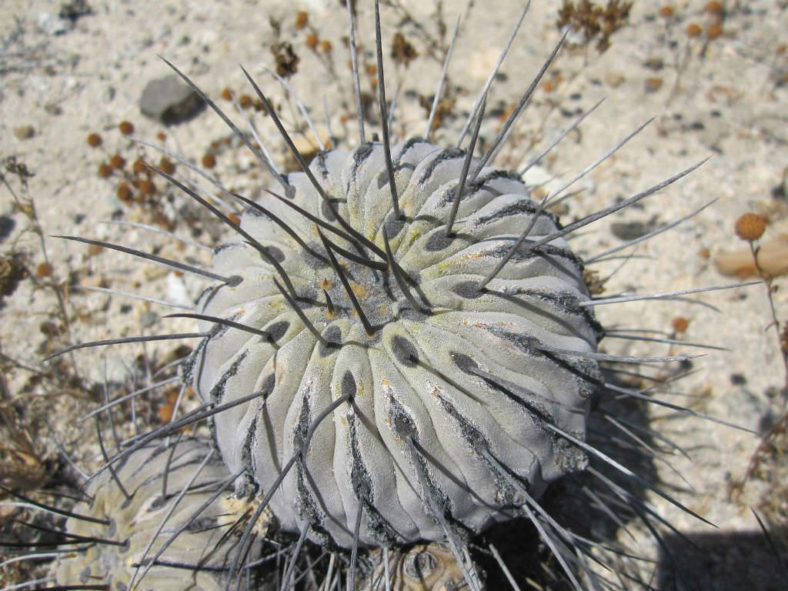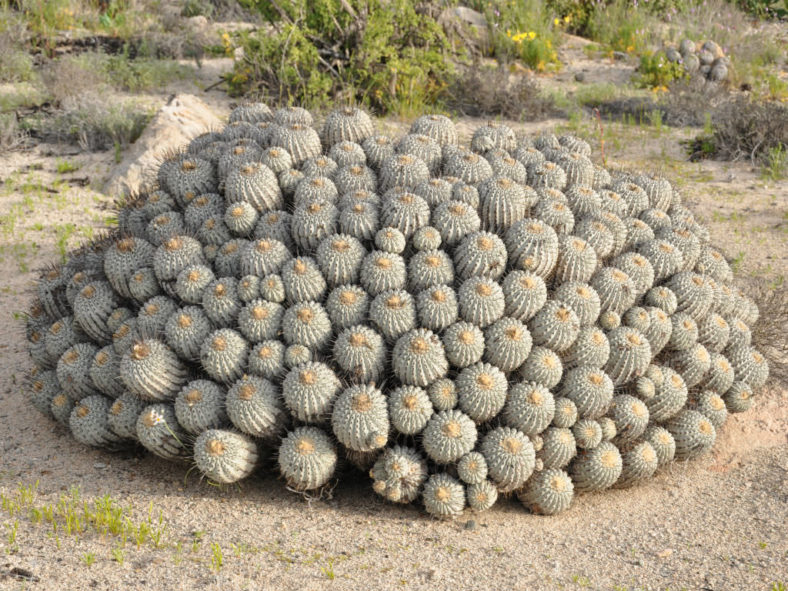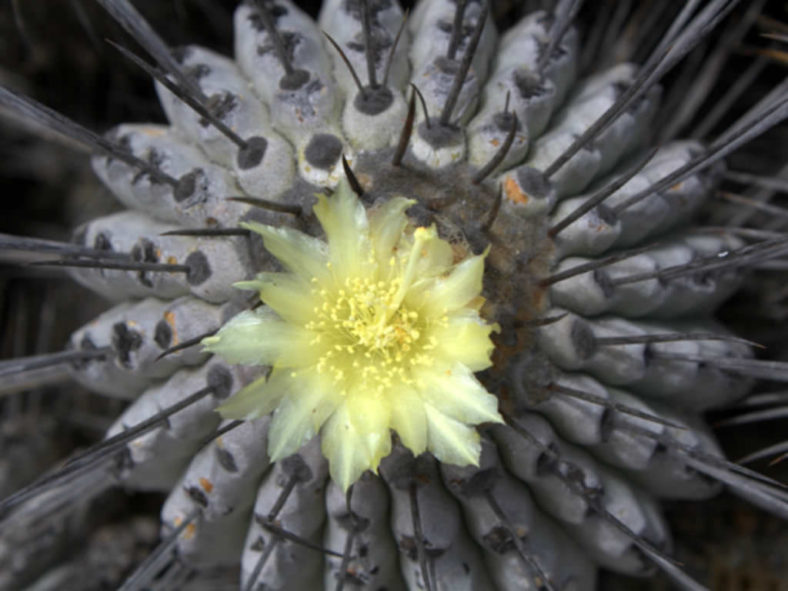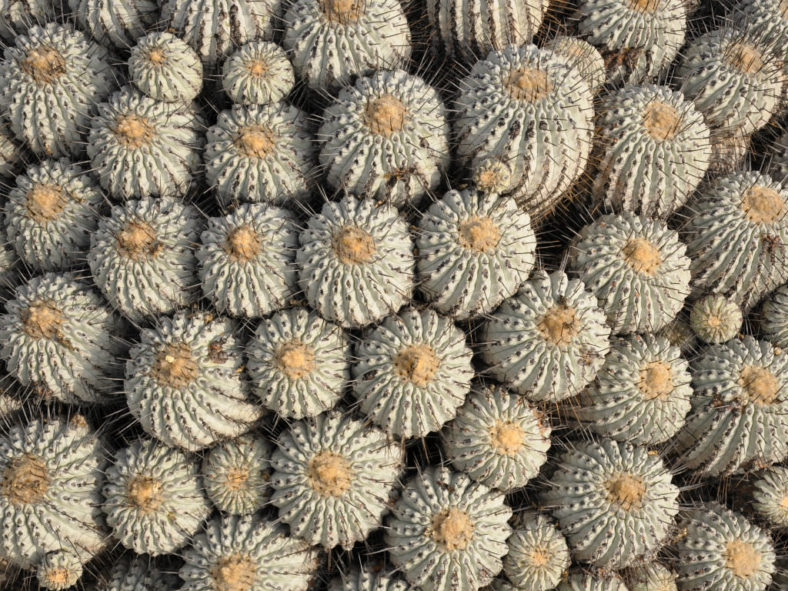Scientific Name
Copiapoa dealbata F.Ritter
Synonym(s)
Copiapoa carrizalensis, Copiapoa cinerea var. dealbata, Copiapoa cinerea subsp. dealbata, Copiapoa malletiana, Echinocactus malletianus
Scientific Classification
Family: Cactaceae
Subfamily: Cactoideae
Tribe: Notocacteae
Genus: Copiapoa
Origin
Copiapoa dealbata is native to Chile.
Description
Copiapoa dealbata, also known as Copiapoa malletiana, is a cactus that forms impressive mounds reaching up to 3.3 feet (1 m) in height and more than 6.6 feet (2 m) in width. The stems are spherical to short cylindrical, grayish-white with a wooly apex, and can measure up to 6.4 inches (16 cm) in diameter. The needle-like spines are black to light brown, becoming grayish-white with age, and can grow up to 2 inches (5 cm) long. Typically, Copiapoa dealbata has only one spine per areole, while the form with up to 7 spines per areole is known as Copiapoa carrizalensens.
In summer, Copiapoa dealbata produces pale yellow flowers reaching up to 1.4 inches (3.5 cm) in length and diameter. It usually takes 6 to 10 years before the stem blooms.
Copiapoa dealbata is often listed as a synonym of Copiapoa malletiana. However, there is controversy surrounding the name Copiapoa malletiana, and some authors choose to ignore this name because they believe it has not been adequately typified.

Hardiness
USDA hardiness zones 10b to 11b: from 35 °F (+1.7 °C) to 50 °F (+10 °C).
How to Grow and Care
Despite the extreme and specific conditions in their natural habitats, Copiapoas are surprisingly easy to cultivate. This genus is very forgiving, from seed sewing to caring for mature plants. While maintaining size, Copiapoas in cultivation will flower from a young age and reliably so each following year.
These cacti want exposure to half or full sun. If they are in full sun, they must be in a position with good air circulation or risk sunburn.
Watering should be extremely poor. The soil must dry out completely between waterings. Watering should, however, be suspended during mid-summer. In this period, instead of watering, spraying the plant early in the morning, before the temperature warms up, thus simulating the conditions they would have in their natural environment will be appropriate.
The soil should be formed from a mineral substrate (granite crumbled) mixed with very little universal soil.
See more at How to Grow and Care for Copiapoa.
Links
- Back to genus Copiapoa
- Succupedia: Browse succulents by Scientific Name, Common Name, Genus, Family, USDA Hardiness Zone, Origin, or cacti by Genus
Photo Gallery
Click on a photo to see a larger version.


